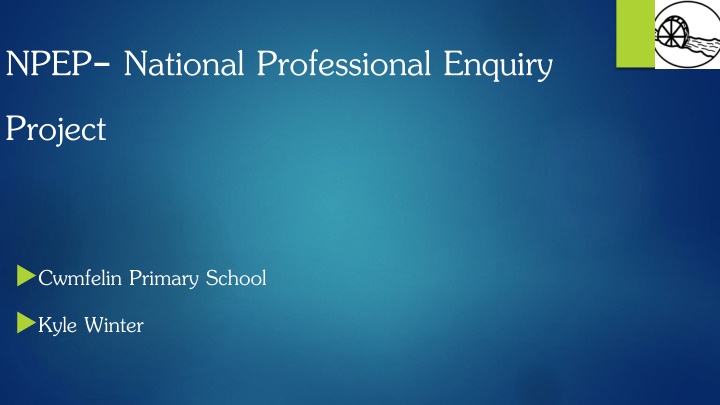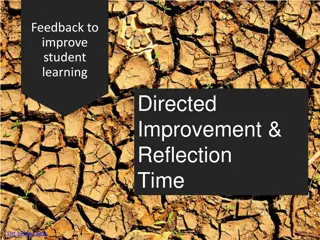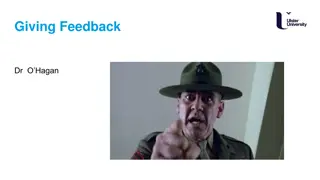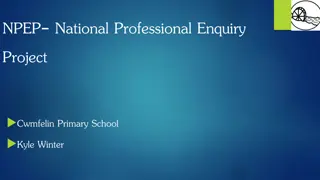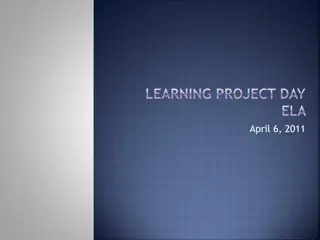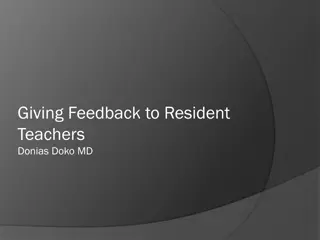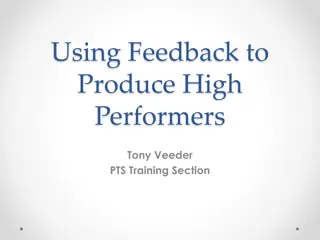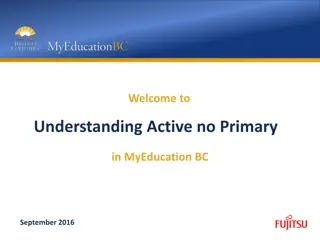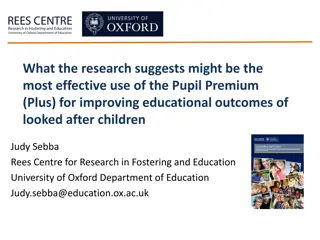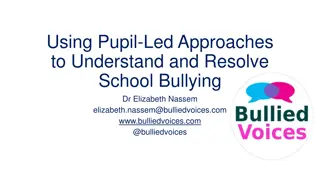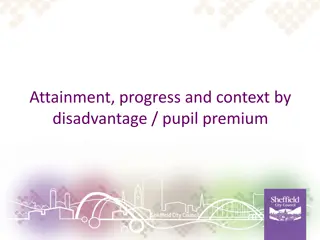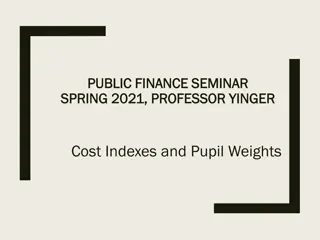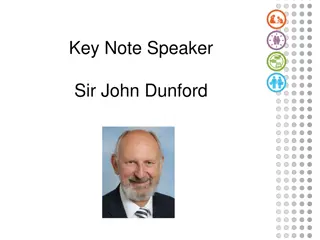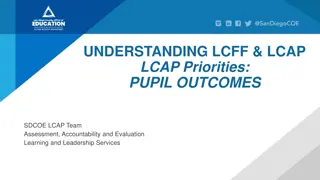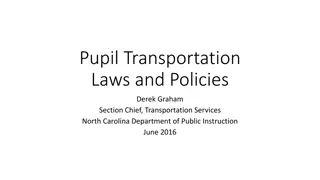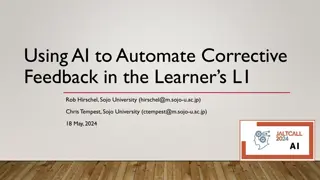Innovative Strategies for Effective Pupil Feedback at Cwmfelin Primary School
The National Professional Enquiry Project at Cwmfelin Primary School, led by Kyle Winter, explores alternative feedback strategies for meaningful pupil engagement and progression. Faced with limitations during the pandemic, the research focuses on qualitative data collection through student interviews and experimenting with gallery critique. Task variety across different year groups enhances the effectiveness of the study in assessing feedback impact on student improvement.
Download Presentation

Please find below an Image/Link to download the presentation.
The content on the website is provided AS IS for your information and personal use only. It may not be sold, licensed, or shared on other websites without obtaining consent from the author.If you encounter any issues during the download, it is possible that the publisher has removed the file from their server.
You are allowed to download the files provided on this website for personal or commercial use, subject to the condition that they are used lawfully. All files are the property of their respective owners.
The content on the website is provided AS IS for your information and personal use only. It may not be sold, licensed, or shared on other websites without obtaining consent from the author.
E N D
Presentation Transcript
NPEP- National Professional Enquiry Project Cwmfelin Primary School Kyle Winter
Enquiry Report Question: When comparing written feedback with alternative strategies, which is more effective in informing meaningful pupil engagement and progression, within an individual setting?
Enquiry Design and Methodology In light of the pandemic and the inability to provide much (if any) meaningful written feedback via online platforms, the aim of the research was to focus on additional methods that offer more in terms of progress and time efficiency. After all, feedback (done effectively), is one practice that can have the greatest impact on pupil progress.
Enquiry Design and Methodology For our primary school children, it was decided that we would adopt a qualitative approach to the data collection and specifically interviews. We would focus on a semi-structured interview consisting of key questions that would help to outline the areas to be explored, but also allow the interviewer or interviewee to deviate in order to pursue a response in more detail. Our group agreed on 4 questions to ask pupils regarding feedback: 1. Did you like receiving _______ feedback? Why? 2. Did you like receiving ______ feedback? Why? 3. Which did you prefer? Why? 4. Which type of feedback helped you to improve your work the most?
Enquiry Design and Methodology The data was taken from our Year 2, Year 3 and Year 5 classes with a number of pupils in each class of similar ability. We decided on a face-to-face feedback approach and experimenting with gallery critique , an idea gleaned from Ron Berger s An Ethic of Excellence. I had already experimented with this technique and found my early trials had been remarkably productive.
Enquiry Design and Methodology Using both feedbacks, tasks across the 3 classes were varied: Year 2 used self-portraits and instructional writing. Year 3 used poetry and character descriptions. Year 5 used a news report and a persuasive letter. The variety of different genres, although not planned, was very useful for the research.
Face-to-face V gallery critique Face-to-face feedback can be formal or informal, received from teachers or peers and take place within class (e.g. discussions, peer review activity). In a gallery critique, all students post work for everyone to view closely. A gallery critique works best when the goal is to identify and capture only positive features in the selected work that can help everyone improve.
Findings using 'face-to-face' Feedback was found to be personal and friendly. Pupils enjoyed the feedback being read to them and explained. Teachers could address each individual student's needs, strengths and weaknesses. It was often much quicker to talk to them. Teachers could ensure that pupils were listening carefully to the feedback.
Findings using 'Gallery Critique' It helped pupils to better understand the demands of a task. It gave their work a purpose and an audience it definitely made them put more effort into the work. They learn from reading a range of different answers. They got an idea of what was great and why. It made them respond to feedback and so improve their work.
Findings using 'Gallery Critique' The Gallery Critique feedback helped pupils to engage more fully in their own development and learning. A pupil responds better to new challenges if they understand what they need to do in order to progress and why doing it matters. The strategy fully engaged the pupils and they were far more focussed on, and had better understanding of, their progression. Because of the work done beforehand e.g. discussing the success criteria and the kind, specific & helpful feedback guidance, their work was marked carefully and they received supportive, high quality feedback.
What did we learn? As a school, it was imperative that we adapted to the current situation. We are continuing to follow National guidelines and recommendations throughout our school (class bubbles, hands washed, masks etc) and in KS2 this is persistently challenging (tables facing the front, pupils not grouped and limited movement in the classroom). Because of this, the way we marked and fed back to pupils had to change. I met with the class teachers, explained my initial findings and discussed the next steps and the process involved.
What did we learn? Pupil Feedback. 'I could see what others had said about my task.' Year 2 pupil 'My friends helped me 'I enjoyed reading the different work and make my work better.' then being able to help others.' Year 3 pupil Year 5 pupil
What did we learn? Some year 2 pupils were still fond of face-to-face feedback as this was what they were used to and therefore most comfortable with. As we moved up the school, the majority preferred Gallery Critique (or GC feedback as we now call it!) The Year 5 pupils found it to be most beneficial and the class teacher saw a great improvement, not only in the work, but also in the attitudes and behaviours of the pupils with each other.
What next? Feedback takes time. Traditionally, feedback was an added extra, an afterthought, not completed accurately or given time. We have found that critique improves the quality of the work and reinforces the content if we asked pupils to focus on this. By actively seeking out errors in content, it develops the level of their understanding. Giving time really benefits the process.
What next? Create a culture. As a school we need to make our pupils value feedback. We need to help them actively read the feedback they are given and make the improvements identified. As teachers, we all need them to see the benefit of this effort and hard work improves work immensely (providing the feedback is constructive). It does take time, and there will be some reluctant pupils, but it is from structured feedback that ensures a deeper understanding of what is required for each pupil to progress.
Challenges All classes need training in the language of critique. Modelling and sentence scaffolds help direct thought, but many will need more practice if they are to make incisive comments. Ron Berger argues that effective feedback is kind, specific and helpful. This is also a good way to structure critique sessions: Pupils need to be taught how to be kind and avoid personal attacks. Pupils must offer specific advice about how to improve if it is to be useful. Pupils should offer suggestions and ideas.
Developing a culture of enquiry Due to this research, I will be feeding back (during INSET and meetings) to the staff on my findings, suggesting and encouraging others to try various feedback techniques to suit their needs. As a school, I know that we will continually support each other as we build new understandings and practices together and will be a stronger force when faced with new challenges and opportunities. As a member of the SLT in the school, I hope that we can act as a supportive network for other colleagues in focusing and applying research into other areas and developing our teachers as learning facilitators, experts in fostering learning and learning how to learn, and able to use their findings for enhancement of their teaching techniques, classroom management as well as pupil learning outcomes.
